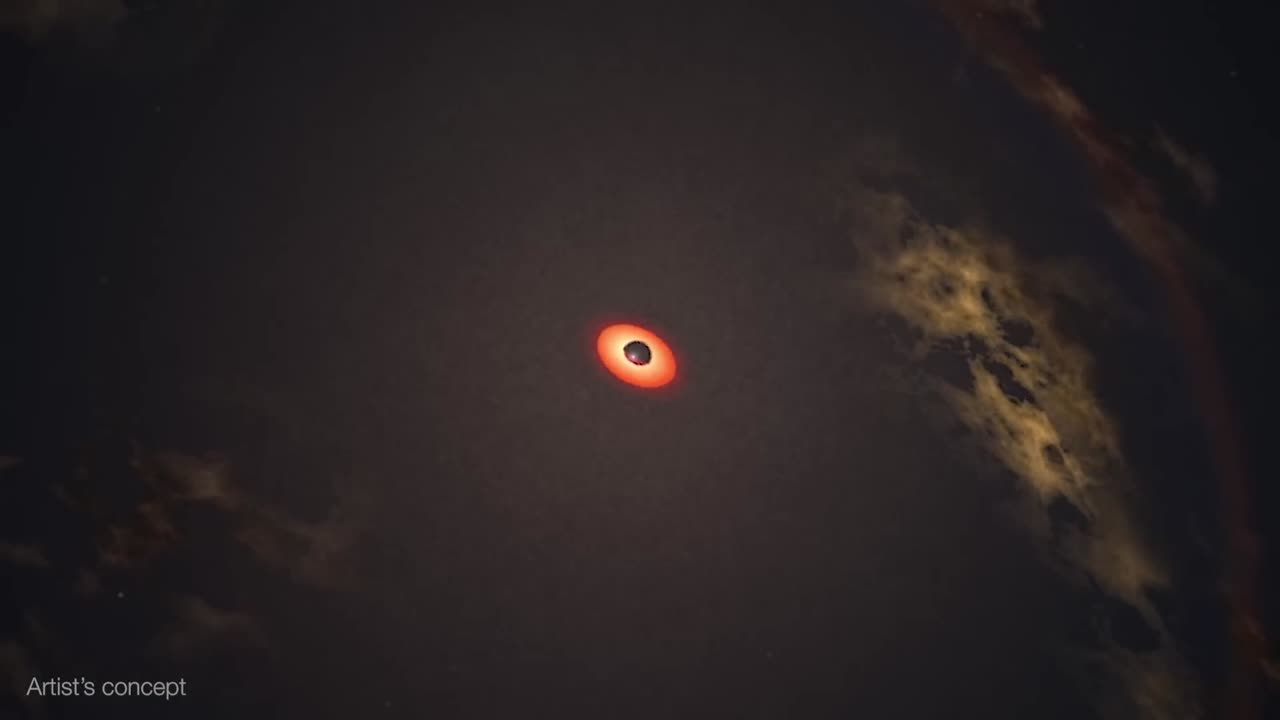Premium Only Content

Black hole snack attack
Using NASA's Neil Gehrels Swift Observatory, which launched in 2004, scientists have discovered a black hole in a distant galaxy repeatedly nibbling on Sun-like star. The object heralds a new era of Swift science made possible by a novel method for analyzing data from the satellite' s X-ray Telescope (XRT).
When a star strays too close to a monster black hole, gravitational forces create intense tides that break the star apart into a stream of gas. The leading edge swings around the black hole, and the trailing edge escapes the system. These destructive episodes are called tidal disruption events. Astronomers see them as flares of multiwavelength light created when the debris collides with a disk of material already orbiting the black hole.
Recently, astronomers have been investigating variations on this phenomena, which they call partial or repeating tidal disruptions.
During these events, every time an orbiting star passes close to a black hole, the star bulges outward and sheds material, but survives. The process repeats until the star looses too much gas and finally breaks apart. The characteristics of the individual star and black hole system determine what kind of emission scientists observe, creating a wide array of behaviors to categorize.
On June 22, 2022, XRT captured Swift J0230 for the first time. It lit up in a galaxy around 500 million light-years away in the northern constellation Triangulum. Swift' s XRT has observed nine additional outbursts from the same location roughly every few weeks.
Scientists propose that Swift J0230 is a repeating tidal disruption of a Sun-like star orbiting a black hole with over 200,000 times the Sun' s mass. They estimate the star loses around three Earth masses of material on each pass. This system provides a bridge between other types of suspected repeating disruptions and allowed scientists to model how interactions between different star types and black hole sizes affect what we observe.
Swift J0230's discovery was possible thanks to a new, automated search of XRT observations called the Swift X-ray Transient Detector.
After the instrument observes a portion of the sky, the data is transmitted to the ground, and the program compares it to previous XRT snapshots of the same spot. If that portion of the X-ray sky has changed,
-
 LIVE
LIVE
The Rubin Report
49 minutes agoPress Stunned by Trump’s Brutally Honest Reaction to James Comey Question
1,993 watching -
 LIVE
LIVE
Nikko Ortiz
2 hours agoADHD, Crashouts, and Karens - Rumble LIVE
238 watching -
 1:02:42
1:02:42
VINCE
3 hours agoComey Indicted, Soros Exposed: The Powder Keg Just Exploded | Episode 134 - 09/26/25
180K107 -
 LIVE
LIVE
Bannons War Room
7 months agoWarRoom Live
14,206 watching -
 LIVE
LIVE
Benny Johnson
1 hour ago🚨James Comey INDICTED for Perjury and Obstruction, Years In JAIL | 275 FEDS in January 6th Crowd
7,328 watching -
 1:35:48
1:35:48
Dear America
3 hours agoBOMBSHELL: 274+ Feds Where in The Crowd On Jan 6th!! + James Comey Finally INDICTED!!
126K85 -
 LIVE
LIVE
Badlands Media
6 hours agoBadlands Daily: September 26, 2025
1,757 watching -
 2:44:51
2:44:51
Matt Kohrs
13 hours agoPCE Inflation Report, BTFD & Payday Friday || Live Trading Stock Market Open
49.7K1 -
 LIVE
LIVE
Wendy Bell Radio
6 hours agoWelcome To The "Find Out" Phase
6,776 watching -
 LIVE
LIVE
GritsGG
2 hours agoQuad Win Streaks!🫡 Most Wins in WORLD! 3600+
61 watching